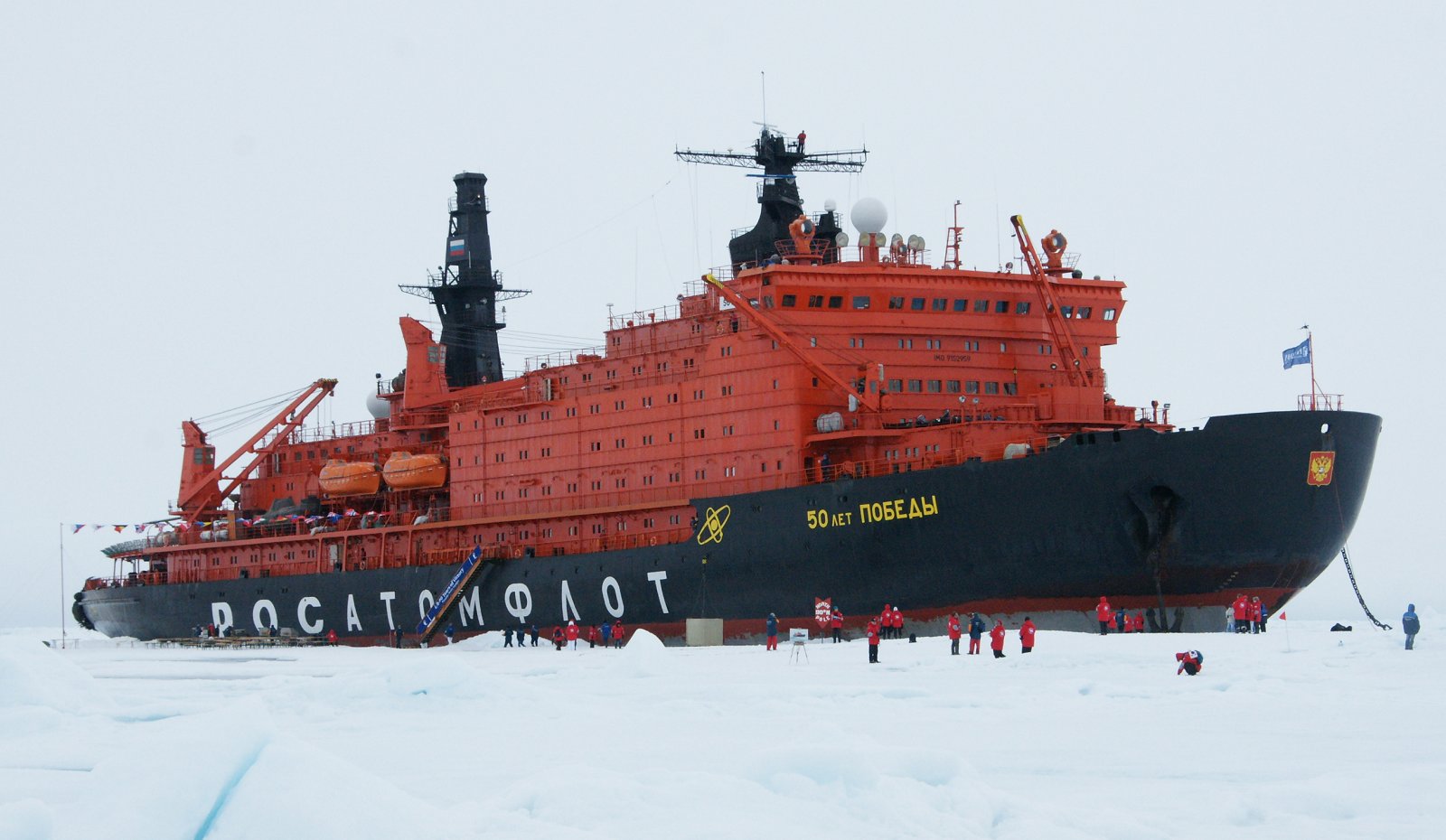A Russian nuclear-powered icebreaker will make 5 North Pole voyages this summer
The icebreaker 50 let Pobedy will sail tourists to the pole from Murmansk, with berths starting at $27,295.

The most powerful icebreaker ever built, 50 let pobedy (50 Years of Victory), will serve as a cruise ship for high-paying travelers this summer. Starting in Murmansk, the nuclear-powered giant sails towards the North Pole five times from June to August. Each tour will take about 120 passengers.
Poseidon Expeditions, one of the operators organizing the tours, promotes the feeling of crushing through the ice like this: “As we make our way across the ice cap, you witness firsthand the ship’s awesome power as massive ice blocks give way under the enormous bulk of the spoon-shaped bow. The sensation of being on deck at this time is surreal and unforgettable.”
Maybe more unforgettable today than tomorrow. The sea ice is currently melting away in record speed. Arctic sea ice gets thinner and younger, making it move faster and break up more easily, a consequences of global warming, which has made the last few winters in the high north weirdly warm.
National Snow and Ice Data Center at the University of Colorado Boulder follows the development by studying satellite data. As the Arctic sea ice was at its maximum extent in March, the center concluded that 2018 saw the second lowest extent in the 39-year satellite record, falling just behind 2017. Worse: The four lowest seasonal maxima have all occurred during the last four years.
Polar scientists predict the North Pole could be ice free in summer within a few decades.
Russia’s fleet of nuclear-powered icebreakers is state-owned and operated by Rosatomflot in Murmansk. Director of the fleet, Vyacheslav Ruksha, says bringing tourists to the North Pole in the summer season isn’t among the most profitable voyages the icebreakers make.
“Such tours are far from being a main economic interest,” Ruksha says in an interview with TASS. “We are interested in this as a school, a kind of free advertising of our work.”
The icebreakers are normally opening passage for vessels sailing along the Northern Sea Route, from the Kara Sea to the eastern northern shores of Siberia. In summer, however, most icebreakers are at port in Murmansk for maintenance.
The first North Pole tourist cruise was arranged in 1991. The first time a Soviet icebreaker reached the geographical North Pole, though, was in 1977 when Arktika became the first surface vessel to make it all the way to the pole. Last year, a 40-year anniversary voyage sailed the same route as the Arktika. That voyage managed to set a new world record on the route, sailing from Murmansk to the North Pole in just 79 hours, less than half the time it took in 1977.
Tickets for a bed onboard the North Pole cruises this year begin at $27,295 for a shared cabin. The 33-square-meter (355-square-foot) Arktika suite, on the top deck of the icebreaker, will cost $42,990 per person.